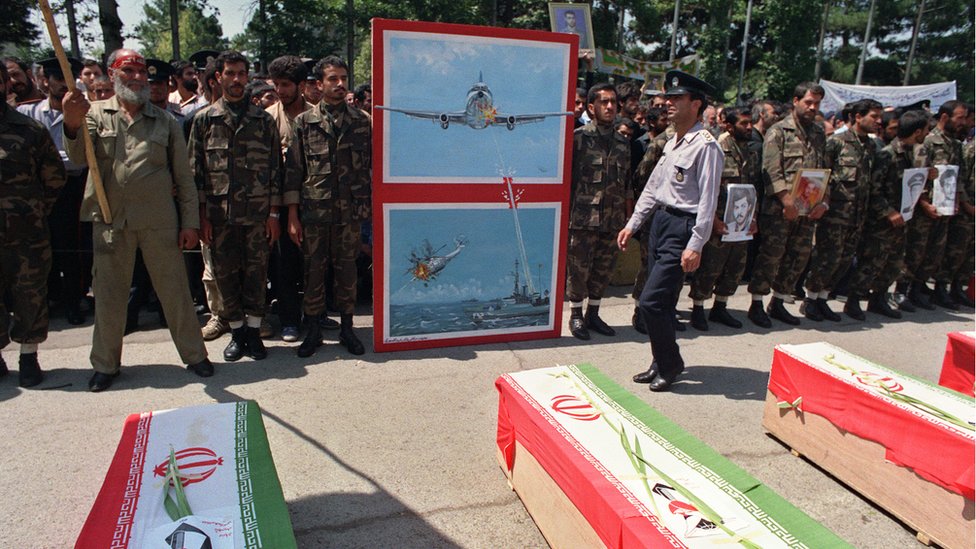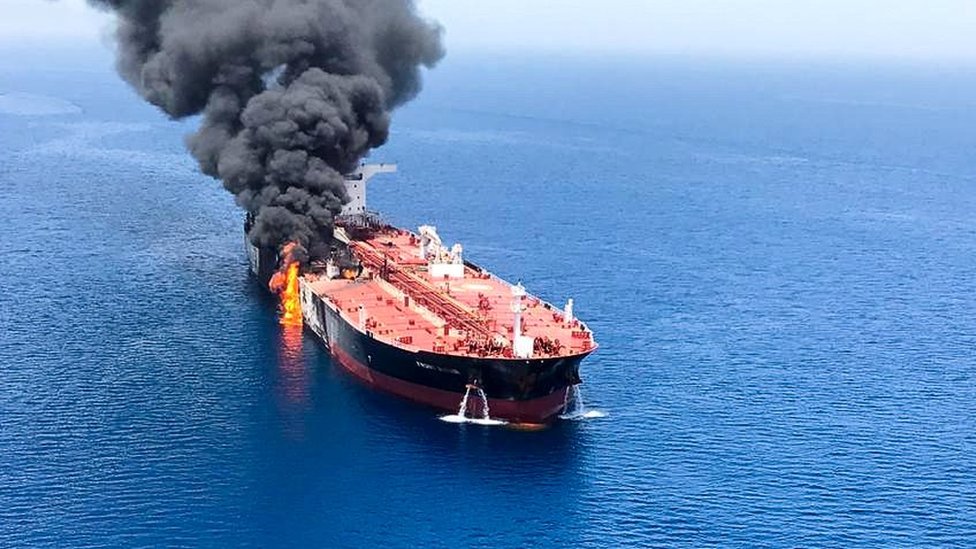Armenians and Turkes have been enemies since Automan Empire and have roots in the Persia. Now they are Southern States of Russia bordering IRI in the north as well as Turkey the previous Automan Empire.
To the East of IRI, there are the two countries Afghanistan and Pakistan where the Taliban and Alqhaedeh are trying to form.
From the CIA-orchestrated overthrow of Iran’s prime minister in 1953 to tension and confrontation under President Trump, a look back over more than 65 years of tricky relations between Iran and the US.
1953: Overthrow of Mossadeq
US and British intelligence agencies orchestrate a coup to oust Iran’s democratically elected Prime Minister, Mohammad Mossadeq. The secular leader had sought to nationalise Iran’s oil industry.
1979: Iranian revolution
The US-backed Shah of Iran, Mohammed Reza Pahlevi, is forced to leave the country on 16 January following months of demonstrations and strikes against his rule by secular and religious opponents.
Two weeks later, Islamic religious leader Ayatollah Khomeini returns from exile. Following a referendum, the Islamic Republic of Iran is proclaimed on 1 April.
1979-81: US Embassy hostage crisis
The US embassy in Tehran is seized by protesters in November 1979 and American hostages are held inside for 444 days. The final 52 hostages are freed in January 1981, the day of US President Ronald Reagan’s inauguration.
Another six Americans who had escaped the embassy are smuggled out of Iran by a team posing as film-makers, in events dramatised in the 2012 Oscar-winning film Argo.
1985-86: Iran-Contra scandal
The US secretly ships weapons to Iran, allegedly in exchange for Tehran’s help in freeing US hostages held by Hezbollah militants in Lebanon.
The profits are illegally channelled to rebels in Nicaragua, creating a political crisis for Reagan.
1988: Iranian passenger plane shot down

The American warship USS Vincennes shoots down an Iran Air flight in the Gulf on 3 July, killing all 290 people on board. The US says the Airbus A300 was mistaken for a fighter jet.
Most of the victims are Iranian pilgrims on their way to Mecca.
2002: ‘Axis of evil’
In his State of the Union address, President George Bush denounces Iran as part of an “axis of evil” with Iraq and North Korea. The speech causes outrage in Iran.
2000s: Nuclear fears and sanctions
In 2002 an Iranian opposition group reveals that Iran is developing nuclear facilities including a uranium enrichment plant.
The US accuses Iran of a clandestine nuclear weapons programme, which Iran denies. A decade of diplomatic activity and intermittent Iranian engagement with the UN’s nuclear watchdog follows.
But several rounds of sanctions are imposed by the UN, the US and the EU against ultra-conservative president Mahmoud Ahmadinejad’s government. This causes Iran’s currency to lose two-thirds of its value in two years.
2013-2016: Closer ties, and a nuclear deal
In September 2013, a month after Iran’s new moderate president Hassan Rouhani takes office, he and US President Barack Obama speak by phone – the first such top-level conversation in more than 30 years.
Then in 2015, after a flurry of diplomatic activity, Iran agrees a long-term deal on its nuclear programme with a group of world powers known as the P5+1 – the US, UK, France, China, Russia and Germany.
Under the accord, Iran agrees to limit its sensitive nuclear activities and allow in international inspectors in return for the lifting of crippling economic sanctions.
2019: Tension in the Gulf

In May 2018, US President Donald Trump abandons the nuclear deal, before reinstating economic sanctions against Iran and threatening to do the same to countries and firms that continue buying its oil. Iran’s economy falls into a deep recession.
Relations between the US and Iran worsen in May 2019, when the US tightens the sanctions targeting Iran’s oil exports. In response, Iran begins a counter-pressure campaign.
In May and June 2019, explosions hit six oil tankers in the Gulf of Oman, and the US accuses Iran.
On 20 June, Iranian forces shoot down a US military drone over the Strait of Hormuz. The US says it was over international waters, but Iran says it is over their territory.
Iran begins rolling back key commitments under the nuclear deal in July.
2020: Qasem Soleimani assassination
On 3 January 2020, Iran’s top military commander, Gen Qasem Soleimani, is killed by a US drone strike in Iraq. Iran vows “severe revenge” for his death and pulls back from the 2015 nuclear accord.